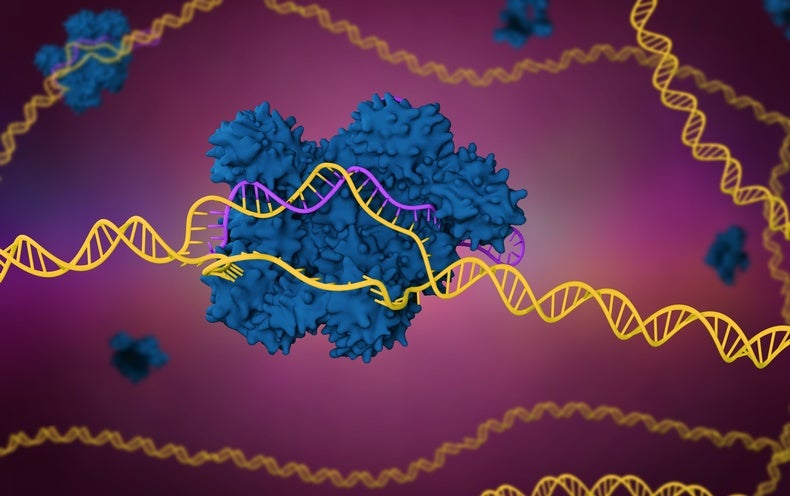November 12, 2022 - You can live just fine with half a brain
You can live just fine with half a brain Senator-elect John Fetterman (D-PA) suffered a stroke in May this year, but he eased back onto the campaign trail within just a couple of months. Fetterman’s recovery showed in real-time how the brain can reorganize itself to work around insult and injury. As recently as the 1990s, it was widely believed that the adult brain is fixed and cannot repair itself. In fact, it is highly dynamic, and it alters its structure and function in response to just about everything it experiences. The mechanisms responsible for these changes are collectively referred to as neuroplasticity. While the brain does continue to change throughout life, its capacity for change is greatest during childhood and decreases with age. For example, Helen Santoro was born without a left temporal lobe, a brain structure that is crucial for language, but she has a passion for language and works as an investigative journalist. If an adult were to have their left temporal lobe removed, they would almost certainly lose their language abilities for good. As we see in stroke patients, even minor damage to the structure can significantly impact speech. It can take years for a patient to recover from more severe damage. Continued here |
A defining moment: How Europe's CEOs can build resilience to grow in today's economic maelstrom A confluence of crises and disruptions has darkened European skies. The energy crisis is already dire and could get worse. The war in Ukraine continues, an unabated humanitarian tragedy. The cost of life’s essentials has gone through the roof—prices in some countries have risen eightfold. Business signs are weakening. In July and August, purchasing managers’ indexes indicated contraction for the first time since early 2021. China, a key supplier and customer, is wrestling with its own economic problems. The effects of climate change are pronounced across the continent, with drought and extreme heat curtailing hydropower and even putting industrial production at risk. The energy crisis threatens to derail the net-zero transition. Semiconductor shortages, technological shortfalls, and labor shortages remain. The latest McKinsey scenarios, undertaken in partnership with Oxford Economics, suggest that European GDP will most likely contract overall in 2023 (Exhibit 1). How will Europe’s business leaders respond? This is a defining moment for a generation of executives who have never been tested in quite this way. Yes, today’s leaders have faced down the global financial crisis, the euro crisis, Brexit, and the COVID-19 pandemic. All were challenging in their way; each crisis called for ingenuity, grit, and determination. Many business leaders met these challenges exceptionally well. But today they face a unique confluence of crises that is of another magnitude. The playbooks of the past will be only moderately helpful. Continued here |
�
�
The Fallout of the FTX Collapse When Samuel realized that FTX had suspended withdrawals on November 8, his hands began to tremble. The $25,000 in assets he keeps with the crypto exchange, equivalent to a decade’s worth of savings, was suddenly out of his reach. Samuel, who asked to be referred to only by first name to preserve his anonymity, says he lives somewhere in Southeast Asia and is currently between jobs, which means money is tight. The cryptocurrency in his FTX account was his nest egg. Samuel first caught wind of a problem at FTX on November 6, but dismissed the reports as simple “FUD”—a term used in crypto circles to describe baseless fear, uncertainty, and doubt. He says he thought that FTX, until now one of the world’s most reputable exchanges, was “bulletproof” and there was no way his funds could be in danger. FTX founder Sam Bankman-Fried helped contribute to this misconception, tweeting on November 7 that “FTX is fine. Assets are fine.” (The tweet has now been deleted.) Continued here |
The Buddhist concept of "yugen" helps you embrace the mysterious and profound Alan Watts, one of the first to explain Buddhist aesthetics to Western audiences, admired the Zen concept of yūgen, often translated into English as a feeling of mysterious profundity. But as Watts explains in his lecture “The Way of Tea,” this definition misses the subtlety of the sensation, best rendered through images. You experience yūgen watching the sun sink beyond a hill covered in poppies, or witnessing wild geese disappear into a bank of clouds, or walking on a strange path — an old mining road, an abandoned railroad track, a shaded walkway in a city park — with no thought of returning. These encounters, evocative blends of alertness and longing, are rare, Watts believes, because our perception is usually controlled by two drives: to survive and to understand. In survival mode, we see only what meets our most basic needs; in pursuit of comprehension, we notice only what conforms to our mental frameworks. But then, sudden as weather: those moments — inscrutable but exhilarating — that silence our practical concerns and call us to unexplored regions over the knoll, behind the wall, on the other side of that door. Continued here |
The parenting paradox of the ultra-wealthy There are many individuals in societies who have grown extremely wealthy on their own merits. Through steadfast dedication, developing a novel product or idea, starting a successful company, or simply by being prolific savers, they’ve accrued enough money to live a life free from want, worry, or if they so choose, work. But once their capitalist dreams are realized, many face a conundrum: How do they instill meritocratic beliefs in their children while at the same time passing them incredible unearned wealth? Dr. Katie Higgins, a postdoctoral fellow with the Changing Elites Project at the University of Oxford, is fascinated by this apparent paradox, which, as she wrote, “promotes both the value of work among the next generation of inheritors and the preservation of dynastic wealth that will preclude their dependence on income-generating work.” Between 2019 and 2021, Higgins interviewed 26 ultra-wealthy people living in England whose self-made fortunes ranged from £16 million to over £1 billion, asking them about their plans for their children’s inheritance and their feelings associated with it. Continued here |
Review: 'Black Panther: Wakanda Forever' Is Not Your Typical Marvel Movie The release of Black Panther was like nothing before it. The impact, immediate and abiding, was cosmic. That the film premiered during the Trump years, a dystopian period in 2018 when Black life felt more precarious than usual and the call for Black superheroes more urgent, gave its message a special charge. It was a phenomenon three times over—a commercial, critical, and cultural triumph. King T’Challa was a new-age hero for a new, uncertain time. No stranger to larger-than-life roles, Chadwick Boseman brought poise and charisma to the performance alongside an all-star ensemble that included Lupita Nyong’o and Michael B. Jordan. Black Panther had teeth, and it was smart enough to skirt the easy trap of representation in an industry starved for color and meaning. A credit to director Ryan Coogler and co-screenwriter Joe Robert Cole, the movie was about more than the miracle of being acknowledged; it was a measure of genuine progress. It spoke to us and we answered back. New Black futures—intricate and lush and free—were opening up. Unforeseen in one of those futures was Boseman’s passing, in 2020, from colon cancer. Franchises are built on star power, and without Boseman, one of Marvel’s brightest and most promising, Black Panther: Wakanda Forever is haunted by his absence, draped in the kind of sorrow that can’t be ignored. MCU films and series rarely channel the turbulence of grief with such unflinching focus (WandaVision came close in its unconventional depiction of spousal heartache and its psychological aftershocks). The positioning is curious but effective. I hesitate to call Wakanda Forever a new kind of superhero blockbuster—it hasn’t totally reinvented the wheel—but it’s close. Coogler has equipped his sequel with a changed vocabulary: It speaks equally from a place of loss as it does triumph. Grief is its mother tongue. Continued here |
How Australia became the world's greatest lithium supplier Roughly a three-hour drive south of Perth, Western Australia, off the South Western Highway and behind the historic mining town of Greenbushes, the land beyond the town's primary school falls away to reveal a deep, grey scar. This is the site of an old tin mine known as the Cornwall Pit. At roughly 265m (870ft) deep, the terraced wall of the pit represents a century's worth of work that began in 1888 when a pound of tin was lifted out of a nearby creek. When the surface-metal was scoured from the landscape, methods changed eventually giving way to open-cut mining in the host pegmatite vein – an igneous rock with a coarse texture similar to granite. In 1980, another metal was found at Greenbushes which, at the time, didn't give the mine owners much pause for thought. Lithium, a soft, silvery-white reactive alkali metal, was considered more of a geological oddity. Continued here |
Why your brain thinks you're Matt Damon Conceptualizing yourself in the future is not easy. Research shows that we tend to see our future selves like celebrities: vaguely knowable figures that have little to do with us today. This disconnect can lead us to make decisions in the present that don’t benefit us down the road. When this shortsightedness expands across societies, bad decisions can compound and cause outsized problems for future generations. Although it might be difficult, thinking of your future self while making day-to-day decisions can yield real benefits, such as making you more likely to eat right and exercise, more likely to plan ahead financially, and more likely to forge strong and healthy relationships. Continued here |
The "triple alignment" makes world mapping history The small English village of Langton Matravers, on the Dorset coast, until recently had just one small claim to fame. In 1914, a young Ian Fleming, later the author of the James Bond novels, attended Durnford Preparatory School here. By all accounts, he hated it. Perhaps he would have been more at home at one of the two other prep schools in town, predictably named Spyway. All three schools have long since closed, but no matter. On November 2, 2022, Langton Matravers wriggled itself into another footnote in the history books. For it was here that the “triple alignment” made landfall in Great Britain. While that sounds like a sinister coalition of evildoers straight out of one of Ian Fleming’s creations, the phenomenon was not of sorts to frighten the locals — merely to delight cartographers. In other words, the village made mapping history. The term refers to the alignment of true north, magnetic north, and grid north, a first in mapping history, and an event that may not recur for several centuries, if ever. Continued here |
How inflation is flipping the economic script, in seven charts Every morning a new headline underscores growing economic concerns: Highest inflation since the 1970s. Central banks aggressively raising rates. Consumer sentiment at record lows. Commodity prices near all-time highs. Clearly inflation has, at a minimum, altered the economic mood, and potentially reset the path of global and national economies worldwide for years to come. McKinsey’s experts have examined many of the strategic implications of inflation. Here, we use the best and most recent publicly available data to offer seven charts illustrating inflation’s insidious progress. Double trouble. In the past six months, inflation has far exceeded December 2021 expectations. In many countries, actual rates have doubled projections. European countries are particularly affected. For example, inflation in Lithuania is running at 15.5 percent annually, nearly five times the rate expected. Poland is at 11 percent and the United Kingdom at 9 percent, both well above projections. At 3 percent, Switzerland is an outlier. Asia is seeing a less severe change: Indian inflation is about 7 percent, only a bit above projections; and South Korea is at 5 percent. In China and Japan, inflation remains muted. Continued here |
How One Company Used Data to Create Sustainable Take-out Food Packaging Digital technology has made it commercially possible for companies to offer an alternative, more sustainable, and deposit-free recyclable packaging system for take-out food. Suppliers rent their packages to restaurants and end users simply pick up their desired take-out and then return the packaging within a specified period free of charge. The restaurant cleans the used packaging and then reuses it. This article explores how one of the pioneers of this new approach, the German company Vytal, makes the new system work and offer five lessons from its experience. Continued here |
Filmmakers Find Section of Destroyed Space Shuttle Challenger on Ocean Floor The artifact, which today remains where it was found by the crew filming The History Channel’s new series “The Bermuda Triangle: Into Cursed Waters,” was positively identified by NASA based upon the item’s modern construction and presence of 8-inch (20 centimeters) square thermal protection (heat shield) tiles. The segment of Challenger was found in waters off Florida’s Space Coast, well northwest of the area popularly known as the Bermuda Triangle. “This discovery gives us an opportunity to pause once again, to uplift the legacies of the seven pioneers we lost and to reflect on how this tragedy changed us,” said NASA Administrator Bill Nelson in a statement issued on Thursday (Nov. 10). "While it has been nearly 37 years since seven daring and brave explorers lost their lives aboard Challenger, this tragedy will forever be seared in the collective memory of our country. For millions around the globe, myself included, Jan. 28, 1986, still feels like yesterday.” Continued here |
Isola del Giglio | Psyche Films Legend has it that the Italian island of Giglio was created when the goddess Venus emerged from the ocean and seven gemstones fell from her necklace. The stones are thought to have formed the Tuscan archipelago, of which Giglio is its pearl. It’s perhaps unsurprising that a place of such natural beauty should be enshrouded in myth. Nestled in the Tyrrhenian Sea off the coast of Tuscany, Isola del Giglio is known for its azure seas, granite cliffs and rustic architecture. Weathered by time and climate, the island’s natural beauty resides in its vibrant colours and jagged imperfections. But, as the short film Isola del Giglio (2014) shows, it’s the people, and the culture they form, that give the island its soul. The project had its beginnings in sketches and audio recordings compiled by the US filmmaker Tom Schroeder while on a trip to Campese, a town on Giglio with a population of roughly 200. The resulting animations maintain his original sketchbook style. Unfolding in a patchwork of fluid vignettes, the images evoke the experience of a traveller meandering from scene to scene, or perhaps memories of a trip springing to life. Next to the illustrations, written notes offer postcard-like observations and commentary. There’s a gentle informality to the production that mirrors the reposeful nature of the town and its inhabitants. Rounded edges and scribbled outlines form the bones of the scenes, from buildings to pavement. Timeless terracotta roofs point to the island’s long, warm days. Shutters swing open, the windowsills dripping with laundry. Workers idly go about their day with cigarettes dangling from their lips. Sumptuous visuals of mopeds, fish for dinner, stray dogs, a notebook on a breakfast table all tell a story of a quiet holiday in an off-the-path locale – and one that’s not yet overrun by tourists. The source audio lends the film a rich and authentic sense of place. The sounds of laughter, birdsong, music and indistinct chatter transport viewers to Giglio and, as Schroeder explains, add ‘credibility, weight, reality and even poetry’ to the work. Continued here |
Olivia Vinckier: A colorful case for outside-the-box thinking on identity Have you ever been forced to limit your identity to a single box on an application, survey or census questionnaire? For many, it is a futile and overall outdated exercise, especially for those with multiracial and multi-ethnic backgrounds. Olivia Vinckier makes the case for recognizing and accepting, rather than limiting, the growing reality that identity is multifaceted, ever-expanding -- and more colorful than you think. Continued here |
Is Your Board Prepared for New Cybersecurity Regulations? A proposed SEC rule will require companies to disclose their cybersecurity governance capabilities, including the board’s oversight of cyber risk, a description of management’s role in assessing and managing cyber risks, the relevant expertise of such management, and management’s role in implementing the company’s cybersecurity policies, procedures, and strategies. Meeting the new regulatory requirements can be better achieved by aligning how operational leaders discuss cybersecurity with their boards. Operational managers must start presenting their plans in a way that align with the way boards best contribute — the language of risk, resiliency, and reputation. Continued here |
How agtech start-ups can survive a capital drought Over the past decade, countless start-ups have benefited from a venture capital (VC) market that has seen steady growth in dollars invested and deals completed. Within the agtech sector, 1 1. Includes developing companies in core agricultural sectors, such as precision-spraying technologies and next-generation seeds, as well as those spanning adjacent industries, such as chemicals (sustainable materials) and food (alternative proteins). this increased level of funding was particularly transformative. In fact, approximately 20 times more capital was invested in new agtech ventures in 2021 than 2012, 2 2. Based on companies tagged as “Ag Tech” by PitchBook, using only completed deals across all venture capital stages, rounds, and series. Market data in this article were taken from PitchBook unless otherwise noted. For more, see PitchBook.com. whereas VC investment in the overall market grew approximately 11 times over. That said, agtech investment saw a precipitous decline toward the end of 2021, with overall VC following suit shortly thereafter (Exhibit 1). Although overall investment levels are still significantly higher than they were ten years ago, these recent declines raise a number of questions for agtech start-ups and investors, particularly given broader market uncertainty. Continued here |
The 25-Minute Meeting The world of work will always revolve around people working with people, and meeting together is an important way to get things done, which is why meetings will always be a part of organizational life. But they’re also hated by most people — not because they get things done (which they do), but because they typically waste so much time. Since we can’t get rid of them, the answer is to get better at them by making them more efficient, more valuable, and more concise. Purpose. Before you invite people to a meeting, think about why you are having the meeting in the first place. While there are hundreds of reasons people meet, they commonly fall into one of three categories: Inform, Align, or Resolve. For every meeting you organize, finish this sentence: “At the end of this meeting, it would be great if….” Put the result into the meeting invitation. For every meeting you are invited to, ask the organizer (politely) to finish the same sentence. Continued here |
In First, Scientists Use CRISPR for Personalized Cancer Treatment The researchers then used algorithms to predict which of the mutations were likely to be capable of provoking a response from T cells, a type of white blood cell that patrols the body looking for errant cells. “If [T cells] see something that looks not normal, they kill it,” says Stephanie Mandl, chief scientific officer at PACT Pharma in South San Francisco, California, and a lead author on the study. “But in the patients we see in the clinic with cancer, at some point the immune system kind of lost the battle and the tumour grew.” After a series of analyses to confirm their findings, validate their predictions and design proteins called T-cell receptors that are capable of recognizing the tumour mutations, the researchers took blood samples from each participant and used CRISPR genome editing to insert the receptors into their T cells. Each participant then had to take medication to reduce the number of immune cells they produced, and the engineered cells were infused. Continued here |
Chances of Finding COVID-Causing Virus Ancestor "Almost Nil," Virologists Say The full genomes of SARS-CoV-2 and several closely related bat coronaviruses suggest they shared a common ancestor several decades ago. But the viruses are known to swap chunks of RNA with each other, a process called recombination, so each section has its own evolutionary history. In the latest analysis, presented at the 7th World One Health Congress in Singapore on 8 November, scientists compared fragments of coronavirus genomes. The analysis suggests that some sections of bat coronaviruses and SARS-CoV-2 shared a common ancestor as recently as 2016—just three years before the virus emerged in people in late 2019. The work has not been peer reviewed. SARS-CoV-2’s direct ancestor probably formed from several viruses and has been recombining and mutating in bats ever since, says Joel Wertheim, a molecular epidemiologist at the University of California, San Diego, who contributed to the latest analysis. Sampling bats for coronaviruses could possibly identify viral fragments that are more closely related than those found in known coronaviruses so far, but probably won’t reveal one direct ancestor, he says. Continued here |
Global Twitter employees describe chaos as layoffs gut their teams As an Indian Twitter employee, Anupam was one of the 7,500 workers around the world waiting with bated breath to see whether they would be fired last week. It’s estimated that half of Twitter’s employees have now been laid off, losing access to their corporate accounts, many with absolutely no notice. “To her, if my laptop is working, then I’m not fired. But if my laptop stops working, then I’m fired,” Anupam said. The India layoffs are just one part of Twitter’s massive staff reductions across its offices in Asia-Pacific, the Middle East, Africa, and Latin America. According to nine current and former employees from several global offices, the layoffs have left the teams scared about the future of the company, and leave open questions about whether Twitter has the resources to maintain user safety on its platform. Continued here |
How to avoid bad choices When you're in charge of a small child, even the most idyllic setting can turn into a danger zone. In the first years, there is the risk of being hit by a car, falling into a pool or pond, or being bitten by a dog (most commonly, the family's own). The potential perils change with the child's age: alcohol, drugs, violence and untreated mental health issues can endanger the wellbeing of teens and young adults. Road traffic injuries remain a major risk, too. And then there are the invisible dangers, such as air pollution, which are often especially hard to detect and address. Eventually, we all need to be able to appraise risk ourselves, so that we can navigate the world safely without the guidance of our parents or guardian. Without those skills, we are far more likely to make rash decisions that can result in poor health, financial distress – and even a criminal record. Continued here |
Holding Onto Your Marketing Budget in a Downturn
Most marketers know that when the economy turns, their budget at risk. So with today’s economic uncertainty, volatile markets, inflation, and more, what should marketers be doing now? Based on her experience in media and marketing through different economic cycles, the author offers six actions for CMOs to consider as we face a potential downturn: 1) Build a tight relationship with your CFO; 2) Zero out inefficient spend and ways of working; 3) Embrace speed and agility; 4) Stand out by staying in the market; 5) Make decisions in the context of your sector’s dynamics; and 6) Continue to drive forward digital transformation powered by data. Continued here
Subscribe to:
Post Comments (Atom)
|



























/https://tf-cmsv2-smithsonianmag-media.s3.amazonaws.com/filer_public/2a/24/2a2404ae-1ddd-4984-a95d-35abb4f7d83f/fotosancasciano_22.jpeg)








/https://tf-cmsv2-smithsonianmag-media.s3.amazonaws.com/filer_public/eb/39/eb39d624-70e7-4711-9180-6856c64e3466/gettyimages-1272987910.jpg)

/https://tf-cmsv2-smithsonianmag-media.s3.amazonaws.com/filer_public/20/7c/207caf55-9da8-49f8-871a-924d4b1e75f9/ap22310722915593.jpg)
No comments:
Post a Comment